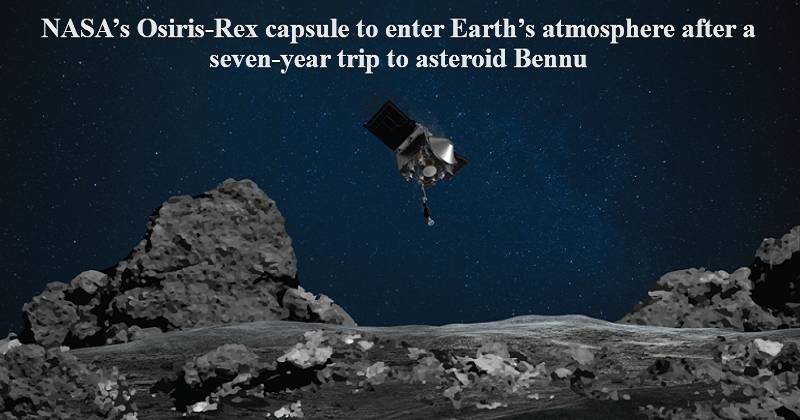
NASA’s Osiris-Rex capsule is set to re-enter Earth’s atmosphere on Sunday, concluding a seven-year, seven-billion-kilometer round trip to the asteroid Bennu. The capsule carries valuable dust samples from the asteroid, eagerly anticipated by scientists for analysis to determine whether life on early Earth evolved after asteroid bombardment.
Additionally, researchers aim to investigate whether the water composition on Bennu matches that of Earth, which could further support the theory that asteroid bombardment played a crucial role in providing the necessary volume for Earth’s oceans.
Professor Dante Lauretta, the principal investigator of the mission, emphasized the significance of the mission’s findings. He stated that when they retrieve the 250 grams (9 ounces) of asteroid Bennu on Earth, they will examine material that existed before our planet. This includes grains that may have predated our Solar System. The mission seeks to answer fundamental questions about Earth’s origins, its habitability, the sources of its water and atmosphere, and the origins of organic molecules essential for life.
The Osiris-Rex mission began in 2016 when NASA launched the capsule toward the asteroid. In 2020, nearly four years later, the probe successfully collected a soil sample from Bennu. Now, after three more years of travel, scientists are on the brink of obtaining the coveted dust samples.
Dr. Ashley King, a member of the team responsible for the initial dust sample analysis at London’s Natural History Museum, expressed his excitement about the upcoming research. He emphasized the importance of conducting these initial measurements thoroughly.
The analysis of the soil sample will begin with an inventory of all the carbon-based molecules it contains, according to Professor Sara Russell of the Natural History Museum. Scientists anticipate finding a diverse range of organic molecules, and this sample return provides an opportunity to identify the pristine organic components of Bennu without the contamination often found in meteorites.
The research aims to advance understanding of the exogenous delivery hypothesis, which suggests that asteroids were a source of the building blocks of life. It also marks a rare opportunity to study pristine asteroid material up close, as such missions are infrequent.

Post Your Comments